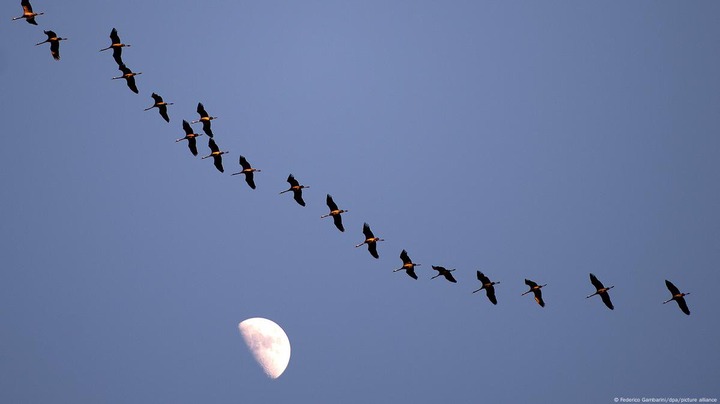
Birds have long captivated human imagination, inspiring innovations like airplanes that mimic their flight. However, their significance extends beyond mere inspiration; they play a vital role in maintaining ecological balance. Twice a year, as hibernating animals like bears and squirrels prepare for their seasonal cycles, migratory birds embark on remarkable journeys across land and sea.
These avian travelers are essential for ecosystem health, pollinating plants, dispersing seeds, and controlling insect populations, all of which contribute to food security. Francisco Rilla, a wildlife biologist and consultant for the UN specializing in conservation and migratory species, highlights that migratory birds also act as “bioindicators.” Their tendency to avoid polluted areas provides valuable insights into the quality of air and water.
**Epic Journeys Across the Globe**
As fall approaches, migratory birds respond to diminishing daylight, signaling that food sources will soon dwindle. Some species, like the diminutive Arctic Tern, undertake astonishing migrations, traveling from the frigid Arctic to the Antarctic Circle, covering a staggering roundtrip distance of approximately 90,000 kilometers (55,923 miles). This remarkable feat makes them the champions of the longest migration in the animal kingdom.
Another notable migrator is the Bar-tailed Godwit, which journeys from Alaska to Tasmania. A remarkable five-month-old bird holds the Guinness World Record for the longest non-stop flight, covering 13,560 kilometers in just over eleven days. To prepare for such extensive travel, Bar-tailed Godwits can shrink their internal organs to accommodate energy-rich fat reserves necessary for the journey. However, climate change is increasingly jeopardizing the ability of some species to undertake these incredible migrations.
**Human Activity and Its Consequences**
Migratory birds rely on natural cues such as the sun, stars, coastlines, and large bodies of water to navigate their routes. Unfortunately, many of their resting and refueling spots along coastlines are being altered by flooding linked to rising sea levels. Additionally, small crustaceans, a crucial food source for these birds, struggle to develop their shells in increasingly acidic oceans due to higher carbon dioxide levels, creating a ripple effect that impacts migratory birds.
Insufficient food availability can hinder their survival during long migrations and affect their reproductive success. Moreover, like humans, birds face threats from the growing frequency and intensity of extreme weather events, such as storms, which can be fatal. Climate change also influences migratory behavior; warmer temperatures may eliminate food scarcity, prompting birds to shorten their migration routes or even forgo returning to their original habitats altogether. This shift can lead to competition for resources between migratory and resident species. While some, like the Arctic Tern, have adapted by expending more energy to cope with strong winds, others, such as the Slender-billed Curlew, have succumbed to habitat loss and were declared extinct in 2024.
**Supporting Migratory Birds**
While many people enjoy feeding birds, Rilla cautions that providing food intended for humans, such as bread and seeds, can be detrimental. Birds may become too full to consume the nutrient-rich foods they need. Additionally, placing food in easily accessible areas can expose them to predators. Instead, Rilla advocates for supporting migratory birds by encouraging governments to expand protected areas through international agreements like the Convention on the Conservation of Migratory Species of Wild Animals.
The United Nations Environment Programme supports these initiatives and suggests further measures to create more “bird-friendly” environments. This year’s World Migratory Bird Day emphasizes the importance of fostering coexistence between humans and birds, promoting the creation of healthy habitats, reducing pollution, and avoiding glass structures that pose collision risks.
The decline of migratory birds could have significant repercussions for agriculture and the broader food chain. As Rilla aptly states, “whatever happens to them could also happen to us.”











